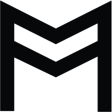Photo: Morgan Sette
Creativity is the product of connecting the dots. Within us, there is a desire to share how we have pieced something together and made sense of it. We gather these dots through our lived experience and assemble them in a way that is uniquely our own. The way we choose to present them, however, differs greatly. Some remain guarded, or hide behind the disguise of a costume, while others lay naked and exposed across the canvas for all to witness. Whether it be a moment of trauma, or the memory of a loved one, we collect the ‘fresh ingredients’ of our lived experience and toss it all into our own artistic blender. Sometimes, you can recognise the component parts, while other times, they have been ‘settled within the superfine purée of the final product.’
Graphic designer Paula Scher likens this idea to a subjective slot machine. She explains how anything she has ‘purchased, rejected, loved, hated’ has been piled and stored one side of the brain. On the other side, however, there is a ‘specific brief’ and the solution to how we can make these connections. She continues this sentiment by describing the importance of intuition and allowing our minds to ‘flow freely.’ Scher says ‘if you pull the handle on the slot machine, they… run around in a circle, and what you hope is that those cherries line up and the cash comes out.’
Jingwei Bu’s latest exhibition Life Maps externalises the dots she’s connected through a series of abstract drawings. Unlike many artists who rely on conscious reasoning, Bu creates with an intuitive approach to meditatively awaken the spirit and conceptualise the tangled web of her memories. Every piece is constructed through an intricate and layered mark making process. Repeated lines, shading, spirals, and number sequencing are among the handful of stylistic gestures used to translate emotion and memory onto paper. In the spirit of time-based performance, each drawing has been created within an allocated time period of several hours.
Bu has apportioned her collection into three distinctive categories. The first of which has been identified as Journey, which represents the emotional rollercoaster of life—its joys and difficulties, pleasures and sorrows. It arouses a sense of optimism, that despite the forces standing in our way, light is always at the end of the tunnel. With that said, Journey can also be psychologically challenging, as there is a lingering element of grief and a gradual build of intensity—especially through Bu’s use of shading.
Intuition is a response to meditation with its soft watercolours and juxtaposing line work. It resets the tone from Journey, as it captures an introspective state of consciousness and shows the artist in a way where she is not reliant on her memories, or emotions, for guidance. Lastly, Mindfulness Walking broaches a more distant and observational approach, as it is inspired by monks of the Sri Lankan temple in Stirling, South Australia. The overlapping lines, and circular shapes, seem to convey a steady direction towards something, with importance being placed on actions and destinations.
This exhibition also includes two live-action performances from the artist; allowing us to gain an insight into Bu’s process, and extend her Life Maps, in real time. But instead of her usual pencil-on-paper approach, Bu interacts with materials that extend beyond the page. Bu’s opening night performance sees her construct a three-dimensional Life Map under numbered projections. Throughout the exhibition period, Bu also performs a series of ritualised movement pieces in the gallery space, and other selected venues. Both are said to be a part of Bu’s healing process and dedicated to her mother’s final moments in the hospital’s intensive-care unit. She says ‘life is a journey… and no matter how terrible [these experiences] may seem, you have to confront it, experience it, and heal from it. You can’t be absorbed within the darkness.’
The abstract quality of Bu’s collection invites us to construct our own series of events and decode the meaning in our own unique ways. Some viewers may have a moment of existentialism and be forced to consider the nature of their existence. What direction am I heading towards? How will my life shift as time passes? What does the future hold? How will it all end? It also reminds us that no matter how much we experience in this life, there will always be another important step for us to take. ‘Life is too short for us to be stuck,’ says Bu. ‘We need to keep moving forward.’
Tanner Muller is a queer writer from Adelaide, South Australia. He is currently Writer in Residence at The Mill. His work has appeared in GLAM Adelaide, Anti Heroin Chic, and The Serenade Files, among others. His self-published collection of interrelated stories ‘under/Limelight’ (2020) is available through Amazon Kindle and Apple iBooks. He holds a BA Honours in English and Creative Writing from UniSA. You can usually find him typing on his laptop or slurring his words at an open mic.
References
1 Palmer, A 2014, The Art of Asking or How I Learned to Stop Worrying and Let People Help, Piatkus, Great Britain.
2 Millam, D 2007, ‘Paula Scher: “I wanted to make wonderful things, things that other people liked, things that were important and mattered”’, How to Think Like a Great Graphic Designer, Allworth Press, New York.


